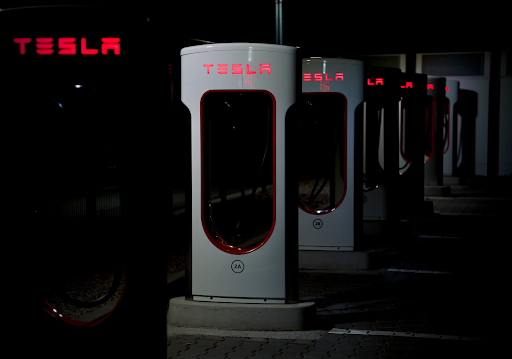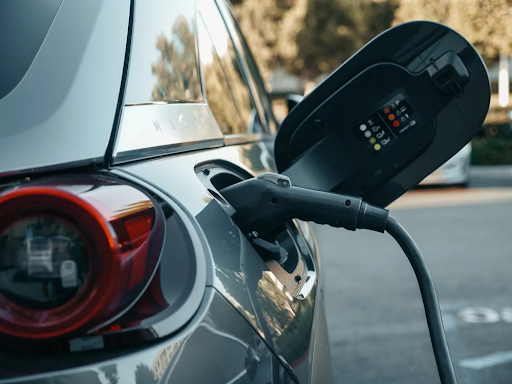4 minute read
When it comes to charging electric vehicles (EVs), there’s no shortage of terms and technologies to understand. Amid the buzzwords, two concepts often emerge: dynamic power allocation and traditional fast charging. Whether you’re a seasoned EV owner or just starting out, understanding these methods can be crucial for optimizing your charging experience. In this blog post, we will shed light on the differences between dynamic power allocation and traditional fast charging, helping you make informed decisions about your EV’s power needs.
The Basics of Traditional Fast Charging
Traditional fast charging has been a game-changer in the EV world. This method utilizes direct current (DC) chargers to deliver high-powered energy directly to the vehicle’s battery, bypassing the onboard charger. DC chargers significantly reduce the time required to charge an EV compared to alternating current (AC) chargers. While AC chargers often take hours to fully charge a vehicle, DC chargers can achieve an 80% charge in as little as 30 minutes. This rapid charging capability makes them ideal for quick stops and long trips.
High-Efficiency Delivery with DC Chargers
One of the primary benefits of DC chargers is their efficiency. By providing power directly to the battery, a dc charger eliminates the need for conversion processes that can waste energy and time. This direct delivery system not only speeds up the charging process but also ensures that more of the energy consumed goes directly into the battery. Additionally, DC chargers are often equipped with advanced cooling systems to manage the heat generated during the fast charging process, ensuring both safety and efficiency.
Traditional Fast Charging Limitations
Despite its advantages, traditional fast charging isn’t without limitations. High power demands can put a strain on the electrical grid, particularly in areas with multiple fast chargers. This can lead to higher operational costs and potential availability issues. Furthermore, the rapid influx of energy can generate significant heat, potentially impacting the long-term health of the battery. Over time, repeated exposure to high-intensity charging can slightly reduce the battery’s overall lifespan, making it crucial for EV owners to balance fast charging with regular, slower charges.
Dynamic Power Allocation Explained
Dynamic power allocation represents the next evolution in EV charging technology. Instead of delivering a constant high power level to a single vehicle, dynamic power allocation intelligently distributes available power among multiple EVs. This system monitors the real-time power needs of each connected vehicle and adjusts the distribution accordingly. For example, if one vehicle nears full charge, the system can divert excess power to another EV with a lower battery level, optimizing overall efficiency and reducing wait times.
Benefits of Dynamic Power Allocation
Dynamic power allocation offers several key benefits over traditional fast charging. Firstly, it enhances the efficiency of charging stations by ensuring that power is not wasted on vehicles that don’t need it. This leads to better utilization of available resources, potentially lowering operational costs and reducing the strain on the electrical grid. Secondly, dynamic power allocation can improve the user experience by minimizing wait times and ensuring that all connected vehicles receive the optimal amount of power based on their specific needs.
Real-World Applications of Dynamic Power Allocation
While still a relatively new concept, dynamic power allocation is already being implemented in various settings. Large fleet operators, such as those managing public transportation or delivery services, can benefit significantly from this technology. By dynamically allocating power, these operators can ensure that all vehicles are sufficiently charged and ready for operation, improving efficiency and reliability. Additionally, public charging stations in busy urban areas can use dynamic power allocation to better serve multiple EVs simultaneously, enhancing overall accessibility.
Environmental Considerations
The environmental impact of EV charging methods is also a critical factor. Traditional fast charging, with its high power demands, can strain local power grids and potentially increase carbon emissions, depending on the energy source. Dynamic power allocation, by optimizing power usage, can reduce these environmental impacts. By making more efficient use of available resources, it supports a more sustainable approach to EV charging, aligning with broader environmental goals.
Understanding the differences between dynamic power allocation and traditional fast charging is essential for making informed decisions about EV charging strategies. While traditional fast charging offers speed and convenience, dynamic power allocation provides greater efficiency and flexibility, particularly in busy or resource-constrained environments. Both methods have their place in the evolving landscape of EV charging, and leveraging their respective strengths can help maximize the benefits for both users and operators. For those looking to stay ahead in the EV revolution, exploring and adopting these advanced charging solutions will be key to success.






